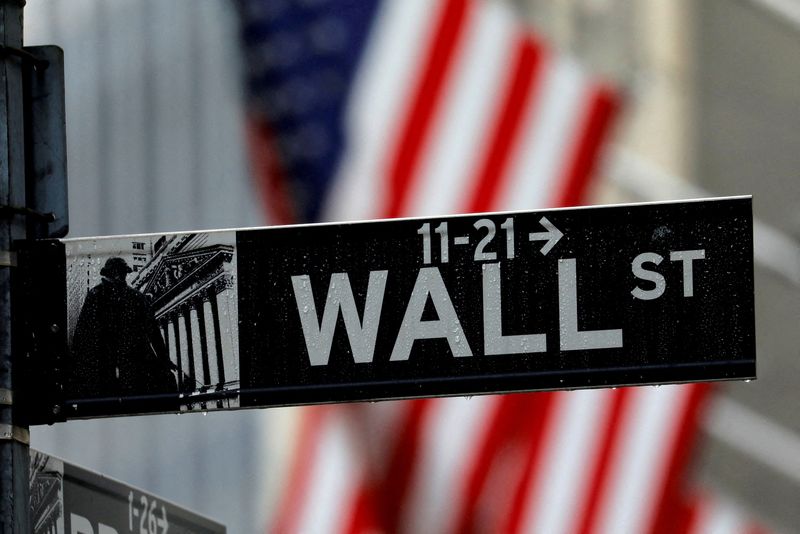(Bloomberg) -- Wall Street’s biggest banks are betting on the Federal Reserve turning much more aggressive in tightening monetary policy than they predicted just weeks ago after Chair Jerome Powell indicated a readiness to step up the fight against inflation.
Economists at Goldman Sachs Group Inc (NYSE:GS)., Morgan Stanley (NYSE:MS) and JPMorgan Chase & Co. (NYSE:JPM) are among those now forecasting the U.S. central bank will boost its benchmark interest rate by 50 basis points when policy makers convene in May and June, before they then return to 25 basis-point moves at the four subsequent meetings.
Counterparts at Citigroup Inc (NYSE:C). expect jumbo hikes to be delivered at four straight policy meetings before they slow to quarter-point moves.
Powell and his colleagues will boost borrowing costs at each of the six remaining meetings through year-end, in the view of almost all major banks. The Fed raised its key rate from around zero to 0.25% to 0.5% this month in the first upward shift since 2018. It hasn’t delivered a half-point tightening salvo since 2000.
The latest forecasts mark a big turnaround since the end of January, when most banks were projecting hikes no bigger than 25 basis points and were divided over whether the Fed would take a pause in tightening at some point this year.
What’s changed is inflation continues to show signs of sticking around its highest level in four decades, and perhaps even accelerating further after Russia’s invasion of Ukraine sent commodity prices soaring. Powell also said last week that officials are prepared to raise rates by a half percentage-point at their May meeting if needed.
As to when the Fed will end its campaign, economists agree it won’t be until next year. But they are split over where the key rate will peak. Morgan Stanley says 3%, but Citigroup reckons 3.75%. Again, such levels are mostly higher than previously anticipated.
“The Fed has accepted that it’s behind the curve and will be emboldened by the resilience of the economy and the financial markets,” Ethan Harris, chief global economist at Bank of America Corp (NYSE:BAC)., told clients in a report. “The remaining question is whether it will be willing to impose serious pain on the economy to rein in inflation.”
What Bloomberg Economists Say
“The Fed hikes at every meeting for the rest of 2022, with one 50 basis point move,” taking the benchmark to a 2% to 2.25% range by year-end, with a further percentage point of tightening in 2023.
-- Anna Wong, chief U.S. economist
Citigroup
- 50 basis points hikes in May, June, July and September, followed by two 25 basis point moves the rest of the year.
- In 2023, further tightening that brings the key rate to a 3.5% to 3.75% range.
- In late January, the bank had projected five quarter-point hikes this year and once-a-quarter moves in 2023 to take the benchmark to 2.25% to 2.5% at year-end.
Goldman Sachs
- 50 basis point hikes in May and June followed by 25 basis point increases in July, September, November and December.
- In 2023, three quarterly boosts, taking the terminal rate to 3% to 3.25%.
- As of late January, Goldman had predicted five quarter-point moves this year and three more in 2023.
JPMorgan
- 50 basis point hikes in May and June followed by 25 basis point hikes in July, September, November and December.
- In 2023, the benchmark will rise to a peak range of 2.75% to 3%.
- As of late January, it had predicted five quarter-point hikes this year and three more by mid-2023.
Bank of America Corp.
- A quarter-point move in May, when the Fed will also unveil its plan for shrinking the balance sheet.
- 50 basis point hikes in June and July, then 25 basis point moves in September, November and December.
- Further moves in 2023 that bring the benchmark to 3% to 3.25% by May.
- In late January, the bank had forecast seven quarter-point moves this year and quarterly hikes in 2023, bringing the benchmark to 2.75% to 3%.
Morgan Stanley
- 50 basis point increases in May and June with quarter-point moves at every remaining meeting through year-end.
- In 2023, the Fed will tighten three times, taking the benchmark to a peak range of 3% to 3.25%.
- In late January, the bank saw hikes of 25 basis points in March, June, September and December before two more in 2023 that took the rate to 1.5% to 1.75%.
©2022 Bloomberg L.P.
